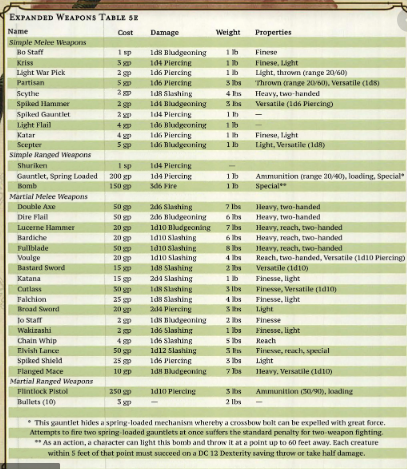


(The hex-map rule omits the specific mention of melee attacks, and this omission isn’t corrected in the DMG errata, but I assume it still holds.

I assume this is because fending off a melee combatant is a very active process, whereas whether a ranged attack hits you or not depends much more on your attacker than it does on you.

Flanking applies to melee attackers only.I’m not sure why the authors didn’t just go with three. (I’m imputing a concept of facing that technically doesn’t exist in D&D 5E, but you know what I mean.) The four-hex gap for Large creatures on a hex map is odd, because four hexes around in one direction is only three in the other. It’s not enough to attack an enemy from the side for flanking advantage to apply: you must attack from behind.Otherwise, your ally isn’t helping you flank-he or she is merely turning one space into difficult terrain. “A creature can’t flank while it’s incapacitated” seems like a silly rule, since you can’t attack if you’re incapacitated, but the important implication is that your ally also has to be capable of taking actions to divide your enemy’s attention.You can’t use flanking advantage to negate disadvantage from attacking an unseen enemy.If you’re playing “theater of the mind,” there’s no way to adjudicate flanking, so the rule doesn’t apply and the advantage can’t be claimed. The clear implication is that flanking only comes into play when using miniatures on a battlemat.Against a Gargantuan creature, they must have at least 6 hexes between them. Against a Huge creature, they must have 5 hexes between them. Against a Large creature, the allies flank if there are 4 hexes between them. Against a Medium or smaller creature, the allies flank if there are 2 hexes between them. On hexes, count around the enemy from one creature to its ally. When a creature and at least one of its allies are adjacent to an enemy and on opposite sides of the enemy’s space, they flank that enemy, and each of them has advantage on attack rolls against that enemy. If the line passes through opposite sides or corners of the enemy’s space, the enemy is flanked.įlanking on Hexes. When in doubt about whether two creatures flank an enemy on a grid, trace an imaginary line between the centers of the creatures’ spaces. When a creature and at least one of its allies are adjacent to an enemy and on opposite sides or corners of the enemy’s space, they flank that enemy, and each of them has advantage on melee attack rolls against that enemy. A Large or larger creature is flanking as long as at least one square or hex of its space qualifies for flanking.įlanking on Squares. A creature also can’t flank while it is incapacitated. If you regularly use miniatures, flanking gives combatants a simple way to gain advantage on attack rolls against a common enemy.Ī creature can’t flank an enemy that it can’t see. The rules of D&D 5E are written with considerable care and meant to be taken absolutely literally, so instead of glossing as I usually do, I’m going to reproduce the exact wording of this rule, in its entirety: Optional Rule: Flanking Yeah, D&D is a game in which silly things happen on the regular, but given a choice, I still like to err on the side of verisimilitude, and it’s a simple fact of life that if you’re being attacked by someone in front of you and someone behind you, you’re going to get the tar kicked out of you.īut after getting some negative feedback to my advocacy of the flanking rule (including one Reddit poster who went so far as to say that as far as he was concerned, it invalidated everything else I say!), I decided to put some feelers out to learn why, exactly, some players are vehemently against granting advantage on attacks against a flanked enemy. Personally, being a longtime player of not just Dungeons and Dragons but also various war games, including quasi–war games like Sid Meier’s Civilization series, I thought using the optional flanking rule on page 251 of the fifth-edition Dungeon Master’s Guide was a no-brainer. I never realized when I began writing this blog just how big a hot-button issue flanking is.


 0 kommentar(er)
0 kommentar(er)
